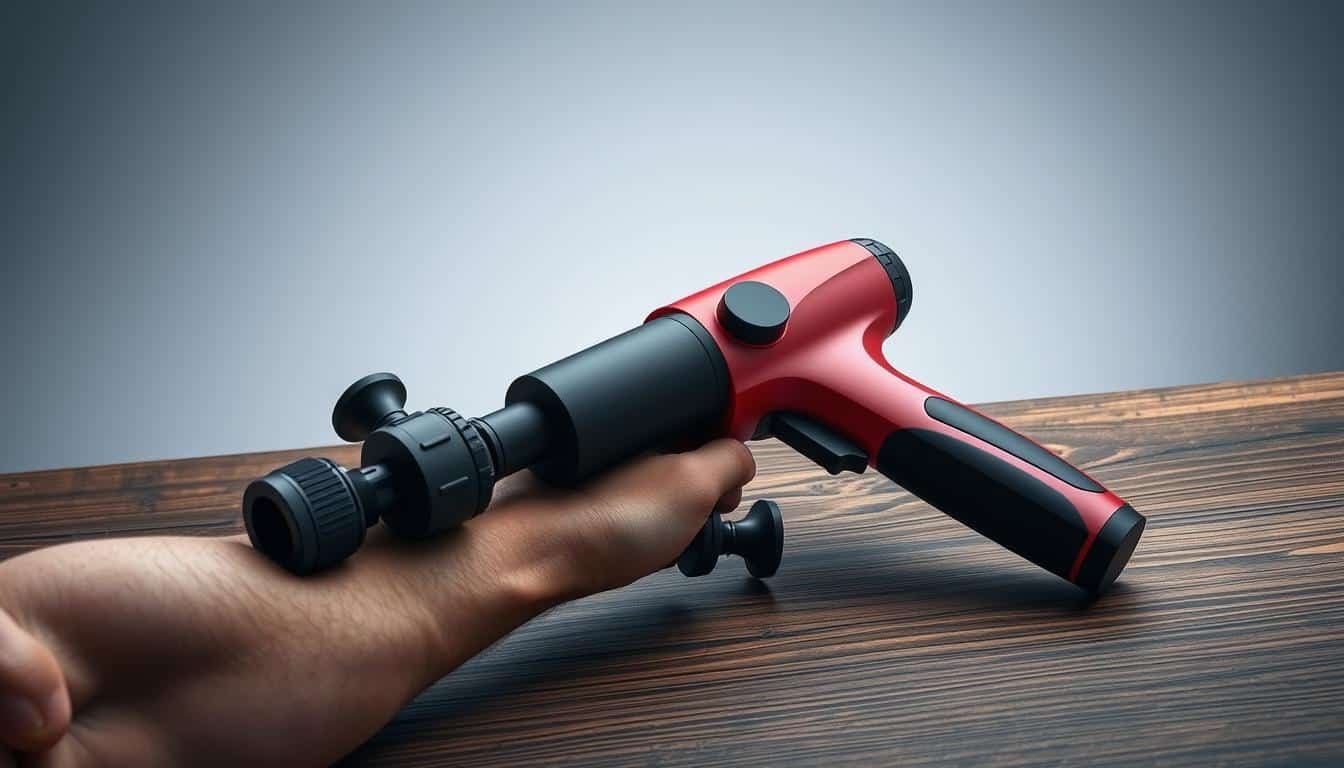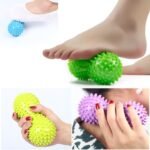Picture this: you’ve just crushed leg day, but your thighs feel like they’ve been through a woodchipper. Enter the shiny new gadget your gym buddy swears by – that futuristic-looking device humming like a power tool. Three minutes later, your legs feel suspiciously… human again. But here’s the rub – was that relief real, or just expensive vibration therapy dressed in sci-fi cosplay?
We’ve all been there. The recovery tech market’s flooded with promises, but physical therapist Ilyza Weiss from JFK Johnson Rehabilitation Institute cuts through the noise. She uses these percussive tools daily – not just for weekend warriors, but for patients battling chronic back issues and shoulder tension that radiates to the neck. The secret sauce? Improved circulation flushes out lactic acid while boosting lymphatic flow – think of it as a highway system for cellular cleanup crews.
But let’s get real – nobody wants to drop cash on glorified vibration plates. That’s why we’re tearing apart the marketing fluff. From trigger point wizardry to flexibility gains, we’re matching the hype with hard science. Spoiler alert: proper technique matters – check our guide on maximizing benefits without the ouch factor.
Key Takeaways
- Clinical experts use percussion therapy for targeted pain relief and recovery
- Enhanced blood flow helps reduce tension and post-workout soreness
- Proper technique prevents injury – start slow and listen to your body
- Devices vary widely – not all deliver clinical-grade results
- Combines with stretching for maximum flexibility gains
What Exactly Are Massage Guns and Percussive Therapy?
Ever wondered how your foam roller became obsolete overnight? Enter percussive therapy – the hyperactive cousin of traditional recovery methods. These handheld devices deliver rapid-fire pulses that feel like a woodpecker’s love language, combining deep pressure with high-frequency vibrations.
The Science Behind Rapid Percussion
These gadgets aren’t just vibrating aggressively for fun. They fire up to 3,200 pulses per minute – enough to make your nervous system forget about soreness. The secret? Gate control theory hijacks pain signals, flooding your brain with “vibration feels” instead of “ouch memories”.
Clinical studies show repeated pressure thicks fascia fluid like a bartender shaking cocktails. Result? Tissues loosen, circulation spikes, and cellular trash gets hauled away faster than last night’s takeout. Our favorite perk? Consistent intensity – no human masseur’s cramping hands here.
How They Differ from Traditional Massage Techniques
Your yoga instructor’s elbow digs might hit one knot perfectly. But these mechanical marvels deliver precision bombardment. While Swedish massage glides surface-level, percussion devices tunnel through muscle layers like a determined gopher.
Traditional methods rely on variable pressure and guesswork. Modern tools offer adjustable settings – think “gentle breeze” to “hurricane mode”. Bonus: zero awkward small talk about your childhood traumas during sessions.
Exploring the Benefits for Recovery and Performance

Your muscles aren’t just sore – they’re throwing a full-blown temper tantrum. Modern recovery tools offer more than temporary relief; they reboot your body’s natural repair systems. Let’s explore why athletes and desk jockeys alike are trading foam rollers for percussive powerhouses.
Improving Blood Flow and Reducing Lactic Acid
These devices act like traffic controllers for your circulatory system. Rapid pulses create temporary “micro-injuries” that spark repair mode. Oxygen-rich blood floods the area while cellular janitors cart off metabolic leftovers. A 2023 Journal of Sports Medicine study showed:
| Therapy Type | Blood Flow Increase | Lactic Acid Reduction |
|---|---|---|
| Percussive | 38% | 42% |
| Rest Only | 12% | 9% |
| Static Stretching | 22% | 18% |
The science is clear: targeted pulses outpace passive recovery. Users report feeling “recharged” rather than just “less broken” post-workout.
Enhanced Mobility, Flexibility, and Range of Motion
Stiff joints? Meet your new negotiator. Five minutes of percussive therapy loosens fascia like summer heat melts asphalt. That calf study everyone’s buzzing about? Participants gained 15° more ankle flexion – equivalent to six weeks of daily stretching.
Improved motion isn’t just about bending further. It’s about moving smarter. Warmed-up tissues respond better to exercise, reducing injury risks. One CrossFit coach noted: “My athletes stopped groaning during overhead squats – now they just swear normally.”
Our Take on “is a massage gun good for sore muscles”
Let’s settle the debate: these percussive devices aren’t Hogwarts wands, but they’re closer to magic than your average foam roller. Through months of testing (and questionable life choices), we’ve confirmed their worth – with caveats thicker than a bodybuilder’s neck.
Immediate Relief for Sore Muscle Groups
Your quads after squats? Glutes post-deadlifts? They’ll sing hallelujah for targeted pulses. Larger muscle groups crave the deep tissue beatdown, while delicate areas like neck muscles prefer whisper-mode therapy. Physical therapists confirm: two minutes on trigger points can untangle shoulder tension that’s been brewing since your last Zoom meeting.
Here’s the kicker – temporary relief doesn’t mean permanent solutions. Think of it as hitting pause on discomfort, not deleting the file. Our golden rule? Treat these tools like espresso shots for your tissues – effective in bursts, disastrous in excess.
Real-World Experiences and Witty Insights
We’ve seen weekend warriors transform from “walking Frankenstein” to “functional human” in 15 minutes flat. One CrossFit coach joked, “My athletes now complain about their exes instead of their IT bands.” The secret sauce? Matching attachment heads to muscle groups like a sommelier pairs wine with steak.
Three truths emerged from our trials:
- Calves respond better than politicians to pressure
- Overzealous bicep sessions create temporary T-Rex arms
- Consistent moderate use > occasional deep-tissue warfare
Our final verdict? These devices are the gateway drug to mobility. Pair them with hydration and dynamic stretching, and you’ve got a recovery cocktail that would make James Bond’s martini jealous.
Proper Usage and When to Avoid Massage Guns

Think of your percussive device as a power tool – fantastic for demolition jobs but disastrous on fine china. We’ve seen enough overenthusiastic users to know: technique trumps brute force every time.
Best Practices for Daily Use and Adjustable Settings
Timing matters more than duration. For pre-workout priming, 30-second bursts per muscle group wake tissues without exhausting them. Post-exercise? One minute max per area – enough to chase lactic acid without starting World War III in your fascia.
Our testing revealed three golden rules:
- Start sessions at 40% power – think espresso shot, not IV drip
- Glide across muscle fibers like butter on hot toast
- Never linger on bony protrusions (your ribs aren’t drum kits)
Red Flags: When to Skip or Consult a Professional
These devices aren’t subtle. If you’re sporting fresh bruises or Frankenstein-like surgical scars, put the gun down. Blood thinners? Recent injuries? That’s your cue to call a physical therapist, not play DIY doc.
Watch for these warning signs:
- Discomfort lasting longer than your last Zoom meeting
- Skin turning colors not found in nature
- Weird crackling sounds (that’s not the “good” kind of Rice Krispies)
Remember: Percussion therapy complements smart recovery – it doesn’t replace common sense. When in doubt, channel your inner librarian: whisper, don’t shout.
Choosing the Right Massage Gun for Your Needs
Navigating recovery tech aisles feels like decoding hieroglyphics while blindfolded. We’ve tested enough devices to know: the perfect tool balances military-grade power with grandma-friendly simplicity.
Features to Look For: Adjustable Speeds and Interchangeable Heads
Speed settings separate weekend warriors from injury victims. Three essentials:
- Beginner mode (think gentle breeze, not hurricane)
- Mid-range pulses for post-workout tightness
- Turbo setting for stubborn knots that laugh at foam rollers
Attachment heads matter more than your ex’s dating profile. Our testing revealed:
| Head Type | Best For | Avoid On |
|---|---|---|
| Bullet | Trigger points | Ribs |
| Flat | Quads/glutes | Spine |
| Fork | Neck/shoulders | Knees |
Safety Tips and Maintenance for Long-Term Use
These aren’t toasters – misuse creates more drama than reality TV. Two non-negotiables:
- Clean silicone caps after multiple people use them (foam traps bacteria)
- Store attachments separately – they’re not LEGO bricks for kids
Physical therapists warn: “Never use on swollen areas or fresh injuries.” Battery explosions? Rare. User errors? Epidemic. When in doubt, ask a pro – your future self will thank you.
Conclusion
The recovery revolution isn’t coming – it’s already knocking with percussive persistence. Through sweat-stained trials and error-filled experiments, we’ve confirmed these devices earn their keep in modern wellness arsenals. Clinical research and gym bag testimonials agree: targeted pulses deliver tangible benefits for weekend warriors and desk-bound warriors alike.
But let’s not pretend they’re magical wands. Smart use transforms them from pricey toys to legitimate recovery allies. Pair percussive sessions with dynamic stretching and hydration – that’s when the real mobility magic happens. Remember: even the fanciest gadget can’t outsmart bad habits or compensate for poor form.
Three truths emerged from our deep dive:
- Science validates improved blood flow and reduced post-exercise tightness
- Proper technique prevents more drama than a reality TV intervention
- Consistent moderate use beats occasional deep-tissue warfare
Whether you’re chasing personal bests or simply chasing toddlers, these tools offer performance perks worth considering. Just don’t let enthusiasm turn you into that person treating their body like a construction site – subtlety remains the unsung hero of muscle health.












